It's 18 degrees. The mid-thirty degree temperatures that were forecasted to offer relief from the previous day spent in the teens and twenties are hours away, if they show at all. The wind has picked up and the morning sun is hiding behind the hillside, refusing to arrive and offer even the most minor respite from the biting cold.
The feeling in my fingers is gone. I'm having trouble pinching the running line against the cork handle of my spey rod and when I sweep the set anchor, the line slips through my hands and and the head and sink tip fall limply to the water in front of me. As I dejectedly look down at my lifeless digits, I notice that two of them are encrusted with ice. I lament, again, not bringing my gloves. I've never been able to fish effectively with gloves, due to the lack of dexterity they present when handling line. But, paralyzed hands are even less useful than fabric-clad ones, leaving me wishing for the warmth.
I try again, with better results. The anchor is set in place and despite the cold and my rustiness, I load the rod well and it launches the head forward. Thirty or so feet along its trajectory, the line bucks to a halt and falls awkwardly to the river's surface. Ice sheathing the rod's largest stripping guide has captured the thin running line that traverses its center, pinching the line and refusing to allow it to move.
I chip carefully away at the ice encompassing the guide and get nowhere, giving up before bending or breaking it off. I dip the rod, holding it in the ripping current until the 34 degree water has loosened the ice enough to allow me to pluck it from the guides. Returning to shore, I once again grease each guide with paste, hoping to get 10 minutes of fishing in before things start to freeze up again.
Tucking the rod under my arm, I stuff clenched fists into the hand warmer pockets of my wading jacket. My feet are actually colder out of the water than in, but I know I won't be able to cast again until my hands have thawed, and there's no sense fighting the current with the rod held precariously by my elbow.
I mill around to keep my blood moving, as much as I'm able to on this tree-choked streambank with a 13 foot rod tucked under my arm. I notice my gravel guard has come unlatched from my boot and bend down to refasten it, but I can't. My waders have frozen and won't budge. I could probably force them, but I don't care that much. And my hands have thawed, which means the Salmon River and the steelhead that swim in it are calling again.

Returning to the same run I left, I huck the first decent cast of the day, starting long instead of short. I still don't clear all the running line I have laying on the river beside me, but the cast runs long enough and I pinch off the line and move on. The even current allows me to fish the cast without mending, and I feel good about the swing, keeping good control of its tempo. I'm satisfied enough, given the conditions, with this alone.
But then, as the line comes around, there's that tug. I feed the fish the equivalent of a small loop, pinch the line off again, and set the hook - expecting something to go wrong. But it sticks and the fish surprises me by heading across river. I feed it the rest of the running line that hadn't cleared during my cast. It turns and heads straight back across river, towards me this time. Still not on the reel, the fish leaps once before deciding to head feverishly downstream.
The reel is frozen, but it doesn't lock and break off the fish. Instead, ice between the frame and the spool of my Galvan T-10 has forced the spool off enough to disengage it from the drag, but not enough to pry it loose. It free spools. And, the fish is gone. The line lays slack in the water. Surely the fish is gone.
I scramble to bring line back onto the spool and once I have, I again pinch the running line against the cork handle and try to strip in the presumably 15-pound steelhead in the way I would a small brook trout. And it's back. The fish hasn't shaken loose. When we've both realized the hook is still lodged, the fish runs again and I try palming the reel, the handle rapping against my frozen fingers. It works poorly. I brace the spool against my jacket, getting somewhat more consistent drag against the nylon. But it's still a poor solution. The reel gives me nothing and I can't keep consistent pressure on the fish. Tight then loose, over and again.
It's a losing battle. After a few more seconds, the fish -- now about 30 yards downstream -- gives a final leap and throws the hook, this time gone for real. In doing so, it shows off its considerable girth and dark red sides, making the loss notably greater.
But after two days, the suffering has been given reason. Rather than pouting over the lost steelhead with a sore disposition, I'm quickly back at it, ignoring my once again badly frozen and stinging hands. Less than a dozen casts later, there's another hearty pull on the line, but I go too quick and miss the fish before it commits to the fly. My confidence in the hot pink egg sucking leech at the end of the line is growing, and after working down the run no more than 10 yards further, another well managed swing has the line lurching again. This fish is stuck -- smaller, but bright and chrome -- but the hookset again feels hasty and after one leap and a mere few seconds, it too is gone.
There's no action anywhere else in sight, and after one more tug a few minutes later, the preceeding frenzy of success is tinted by the hour of nothingness that follows as little more than presumed good fortune and well-deserved bad luck. The guides ice up again. The reel free spools again after my sink tip lodges under a rock. The warmth of our trucks is calling and before long we're trudging block feet up to them.
We decide to drive 25 miles to the Sandy River, more an excuse to warm up than a lust to fish a different river. The wind howls as we stare off the Route 3 bridge at an expanse of exposed bedrock and lack of holding water, thanks to flows that have plummeted from only the day before.
Returning to the Salmon, we stop and gas up the trucks. It's not yet 2pm, so we make a plan to swing flies through Pineville for at least another hour or so before embarking on the 5 hour drive home. Pineville has some of my favorite swinging water on the river and the flows are perfect for it. As I screw on the gas cap, the wind kicks up and whips hard across the station's lot. And, before I realize I have, I look at George and say "I'm done."
Despite George's rebuke, I stick to my guns and decide that I, in fact, am done. My now warm hands and feet will remain so. I'll get home in time to see my kids off to bed. I won't swing the pink leech through Pineville, despite the success it had at Schoolhouse. I won't pursue any more of the steelhead I'd driven so far to chase for only two days.
We say our goodbyes and, with less than 3 miles of the highway behind me, the regrets set in. I imagine the fish stacked up through Pineville. I imagine hookups and fish landed and the hearty, frigid laughs George was sharing with angling strangers. I curse myself for not sticking it out for another hour. I wonder if, perhaps, I'm no steelheader after all.










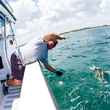
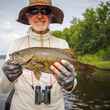




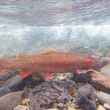



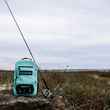
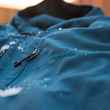




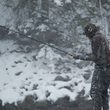

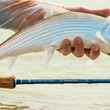


Comments
Anonymous replied on Permalink
I think you mean Prineville.
Chad Shmukler replied on Permalink
The piece references the Salmon River in New York, not the one in Oregon.
NY has Pineville. OR has Prineville. Go figure.
Todd Tanner replied on Permalink
You're a steelheader, Chad. You're just not a masochist. While it can feel like it at times, they're not the same thing.
Frank Reid replied on Permalink
I thought "Steelheader" and "Masochist" were synonymous.
Ron replied on Permalink
I haven't fished the Salmon River in just over 30 years, back when everyone was drifting egg sacks or snagging. I can remember a day when the thermometer read -14 while having breakfast at the diner. We waited until it go to 0 then went to the river to fish between the slush flows. Pineville was one of my favorite places to fish. I'm planning to bring my son 31 year old son there to swing streamers in the Spring.
Chad Shmukler replied on Permalink
Not much has changed in 30 years, evidently. It's still mostly people drifting egg sacks or snagging.
Ed E replied on Permalink
*Sandy Creek, in Pulaski. Not to be confused with the Sandy Creek in Hamlin.
Steve Root replied on Permalink
I wrap a turn or two of this stuff on the rod handle:
https://www.allelectronics.com/item/sft-5/self-fusing-rubber-tape/1.html
It's a little tacky, sheds water, and gives you a good pinch point when it's cold out. It won't hurt the cork either.
That being said, I'm done with steelhead. Many, many trips with no fish. I haven't even seen other guys catch anything. I get the "toughing it out" part of this but somewhere along the line you realize there are better things to do, like fish Trout in tailwater. They actually bite once in a while.
Pages